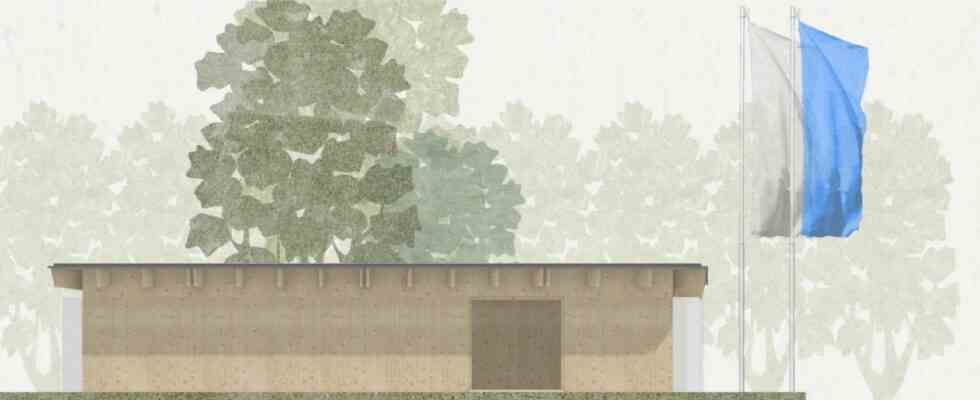There are temporary buildings that attract special attention against their will and not necessarily because of their aesthetic elegance. At the time, this included the Turkish pavilion at the Expo in 2000 in Hanover, a cube surrounded by wooden lattices, on which the Welf Prince Ernst August is said to have relieved himself – which earned him the unflattering nickname “Pinkelprince” from the tabloid press. Of course, that shouldn’t happen to the pavilion with which the district of Munich wants to present itself at the State Garden Show in 2024 in the municipality of Kirchheim. The district’s planned project at the state garden show is still controversial – due to its architectural orientation, the planned subsequent use and the costs.
The building is to be reused at the Heiner-Janik-Haus in Oberschleißheim
The pavilion was planned by the Memmingen architects Phase H, the bridge-like structure should be accessible via two ramps. Depending on the weather, the building can be closed or opened with folding elements, and a central exhibition room will serve as a forum for lectures, exhibitions and other events. The pavilion will cost a little more than 800,000 euros in total and will be available for 150 days during the State Horticultural Show. More important to district politics, however, was the subsequent use of the airy wooden building, which is why the building committee of the district council had already approved the construction in May by a majority and also voted for a later construction of the pavilion on the site of the Heiner-Janik-Haus in Oberschleißheim.
For 150 days, visitors can look forward to exhibitions and lectures in the district pavilion.
(Photo: Phase H Architects)
Only how and whether the pavilion is at all suitable for subsequent use in the vicinity of the Oberschleißheim youth meeting center is still extremely controversial. “The concept doesn’t convince me at all,” protested FDP district councilor Manfred Riederle at the most recent meeting of the building committee. “The main question was how can the building continue to be used afterwards. And for me that is not answered at all.” The planned pavilion for the state horticultural show has no closed rooms, just a “huge area”, according to Riederle from Unterschleißheim. “At best, it’s possible to give a lecture,” said the FDP man – and with a view to the subsequent use in Oberschleißheim, where the district youth council Munich-Land (KJR) is also active: “Before we put anything in the landscape , maybe we should first find out what the KJR actually needs.”
The district of Munich wants to present itself in all its facets with the pavilion at the state garden show – just like the 29 cities and communities. The subject of nature and the environment will of course play a central role, but also the attractiveness of the district as a place to work and live. And that’s exactly what made Unterhaching’s mayor Wolfgang Panzer (SPD) angry again, who said that the district didn’t need an advertising campaign of this kind at all. “People come to us in such large numbers anyway, they want to live and work here,” says Unterhachinger. And it’s not the time to spend so much money on a building like this, says Panzer: “It’s a luxury we can’t really afford.”
In the face of criticism from the SPD and FDP, district master builder Christian Dauer defended the architects of Phase H, saying they had implemented purely political guidelines. “The architects orientated themselves towards what we need,” says Dauer. And the district councilors Christina Riesinger (Greens) and Günter Heyland (Free Voters) clearly presented themselves before the project. It goes without saying that the district has to present itself with its own pavilion at a state garden show, says Heyland. And Riesinger described the pavilion as “a very special building that sets us apart as a district”. The committee finally voted against the votes of the SPD and FDP for the continuation of the plans.

